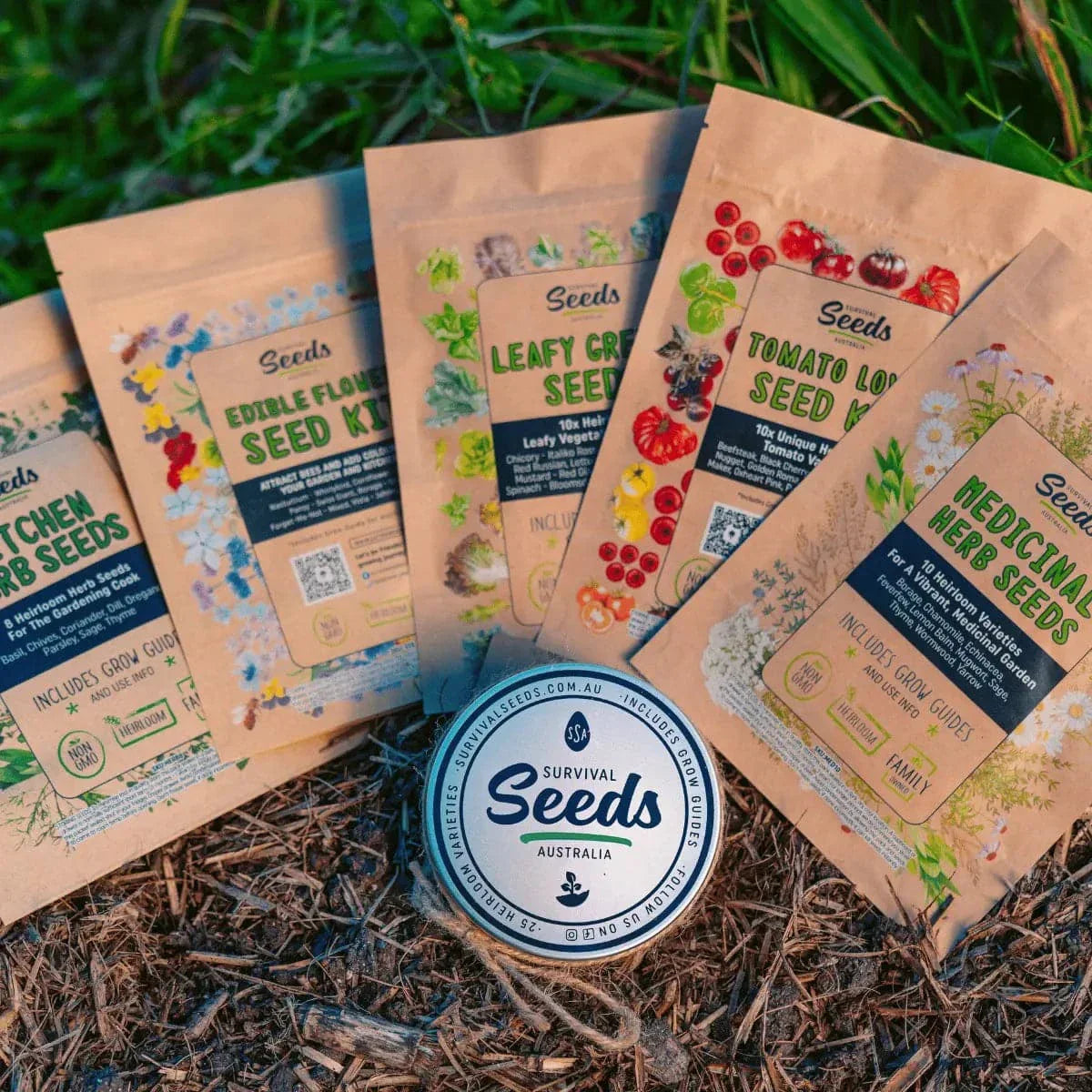Introduction
Sunflowers (Helianthus annuus) are iconic, sun-loving plants prized for their towering stems, vibrant yellow petals, and ability to brighten any garden. Known for their versatility, sunflowers can be grown for ornamental purposes, as a source of edible seeds, or to attract pollinators.
Why Grow Sunflowers?
- Bold Beauty: Adds height and colour to any garden.
- Pollinator-Friendly: Attracts bees, butterflies, and birds.
- Edible Seeds: Provides nutritious sunflower seeds for snacking or feeding wildlife.
Overview of Sunflower Varieties
- Giant Sunflowers: Towering varieties like Mammoth Russian that can reach heights of over 3 metres.
- Dwarf Sunflowers: Compact varieties such as Teddy Bear or Pacino, ideal for small gardens or pots.
- Coloured Sunflowers: Varieties like Autumn Beauty offer blooms in shades of orange, red, and burgundy.
Nutritional and Environmental Benefits
- Edible Seeds: Rich in healthy fats, vitamin E, and magnesium.
- Pollinator Attraction: Supports bees, butterflies, and birds with nectar and seeds.
- Soil Health: Deep roots help improve soil structure and prevent erosion.
Planting Sunflowers
Best Seasons for Planting
- Temperate Regions: Sow seeds in spring after the last frost.
- Subtropical and Tropical Regions: Plant in early autumn or early spring, avoiding the hottest months.
Soil Preparation and Amendments
- Soil Type: Sunflowers thrive in well-draining, nutrient-rich soil.
- pH Level: Neutral to slightly acidic soil (pH 6.0–7.5) is best.
- Preparation: Loosen the soil to a depth of 30 cm, incorporating compost or aged manure to support healthy growth.
Seed Spacing and Planting Depth
- Spacing: Space seeds 30–45 cm apart for large varieties and 15–20 cm apart for dwarf varieties.
- Depth: Sow seeds 2–3 cm deep and cover lightly with soil.
Caring for Sunflower Plants
Watering Schedule
- Water deeply once a week, increasing frequency during dry periods or if growing in sandy soil.
- Avoid overwatering to prevent root rot.
Fertilisation and Maintenance
- Apply a balanced fertiliser or compost during planting and again when plants reach 30 cm in height.
- Stake tall varieties to provide support against wind.
Managing Weeds
- Use mulch around the base of plants to suppress weeds and retain moisture.
Pest and Disease Management
Common Pests
- Aphids: Cluster on stems and undersides of leaves, stunting growth.
- Sunflower Moths: Lay eggs on flower heads, leading to larvae damage.
- Birds and Squirrels: May eat seeds before they mature.
Organic and Preventative Solutions
- Spray aphids with neem oil or soapy water.
- Cover developing seed heads with netting to protect from birds and squirrels.
- Rotate crops annually to reduce the risk of pests.
Preventative Measures
- Ensure good air circulation to minimise fungal diseases like powdery mildew.
- Water at the base of plants to keep foliage dry.
Companion Planting
- Good Companions: Pair with cucumbers, beans, and pumpkins to provide shade and attract pollinators.
- Avoid Planting With: Potatoes, as sunflowers can release compounds that inhibit their growth.
How to Grow Sunflowers in Pots
- Choose the Right Pot: Use a pot at least 30 cm deep for dwarf varieties and 40 cm deep for larger types. Ensure good drainage.
- Soil Mix: Fill with a high-quality, well-draining potting mix enriched with compost.
- Planting: Sow seeds directly into the pot, spacing them at least 10–15 cm apart.
- Placement: Position pots in full sun, as sunflowers need at least 6–8 hours of direct sunlight daily.
- Care: Water consistently and fertilise every 2–3 weeks to support healthy growth.
Harvesting Sunflowers
When to Harvest
- Seeds: Harvest when the flower heads droop, and the back of the head turns yellow or brown.
- Flowers: Cut blooms for decorative use when they are fully open.
Harvesting Techniques
- For seeds, cut the entire flower head and hang it upside down in a dry, well-ventilated area. Once dried, rub the seeds off the head.
- For flowers, use sharp scissors or pruning shears to cut stems at the desired length.
Sunflower Uses
- Edible Seeds: Roast seeds for snacking or save them for replanting.
- Floral Arrangements: Use sunflowers in bouquets or as standalone displays.
- Bird Feed: Leave seed heads intact and place them in the garden for birds to enjoy.
FAQs
Do sunflowers need full sun?
Yes, sunflowers require at least 6–8 hours of direct sunlight daily.
Can sunflowers grow in pots?
Yes, dwarf and compact varieties grow well in pots with proper care.
How long do sunflowers take to bloom?
Sunflowers typically bloom 8–12 weeks after planting, depending on the variety.
Do sunflowers attract pests?
Sunflowers can attract aphids, moths, and birds. Use protective measures like netting and organic sprays to manage pests.
Can I eat sunflower seeds from my garden?
Yes, sunflower seeds are edible and nutritious. Roast them for a tasty snack.
How tall can sunflowers grow?
Depending on the variety, sunflowers can grow anywhere from 30 cm (dwarf types) to over 3 metres (giant types).
Are sunflowers annuals or perennials?
Most sunflowers are annuals, but some perennial varieties, like Helianthus maximiliani, exist.
Conclusion
Sunflowers are a stunning and practical addition to any Australian garden. Their vibrant blooms, pollinator benefits, and edible seeds make them a rewarding choice for gardeners of all experience levels. Whether you’re planting them in garden beds or pots, sunflowers will add a touch of sunshine and charm to your outdoor space.












